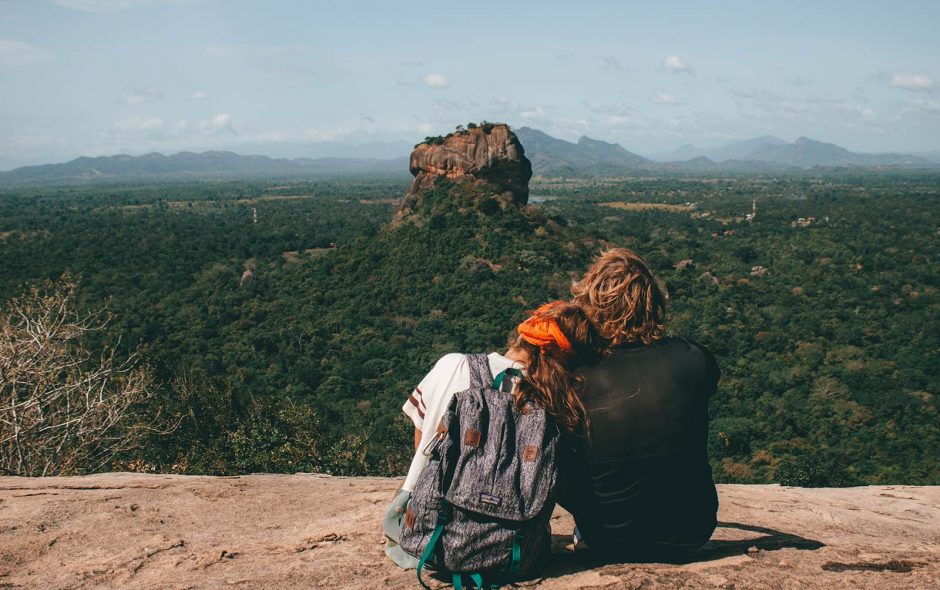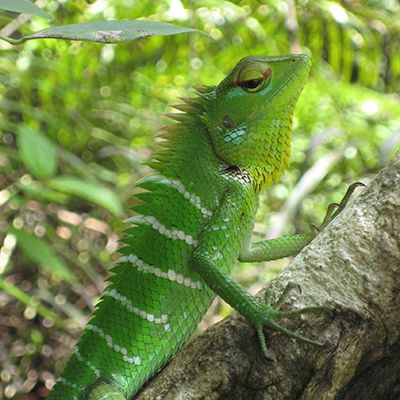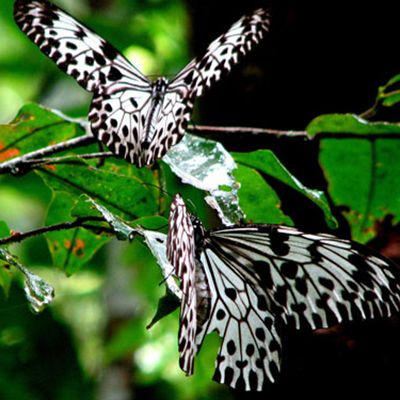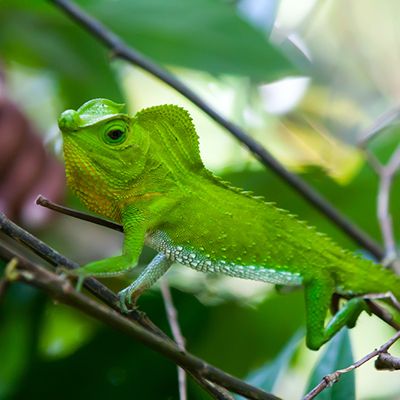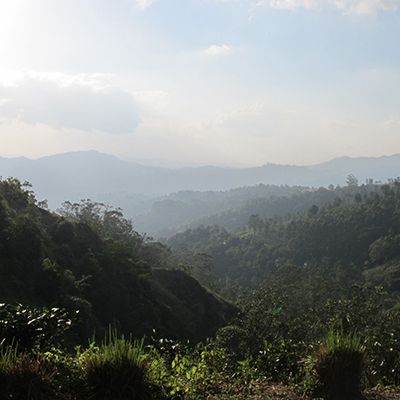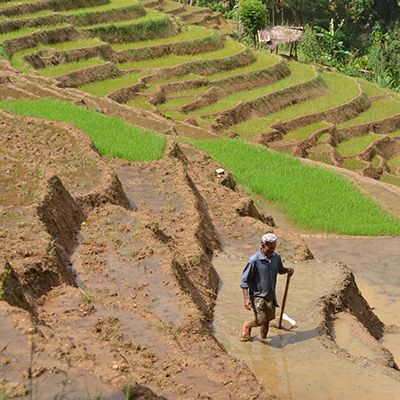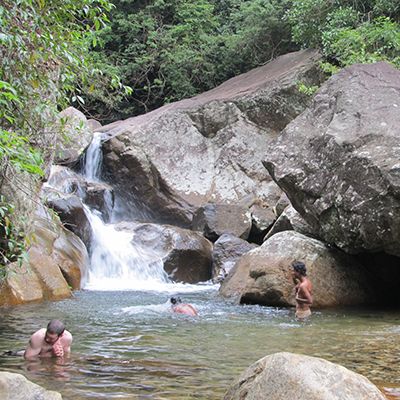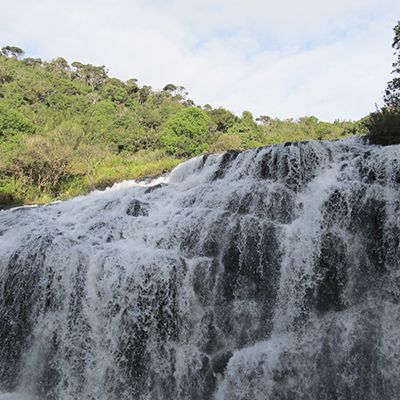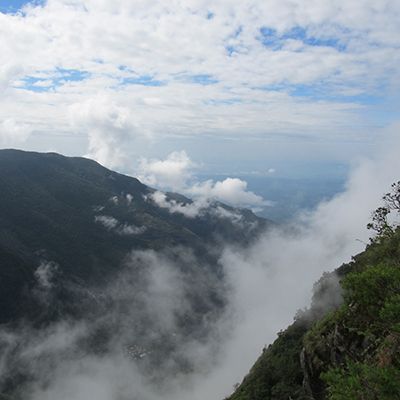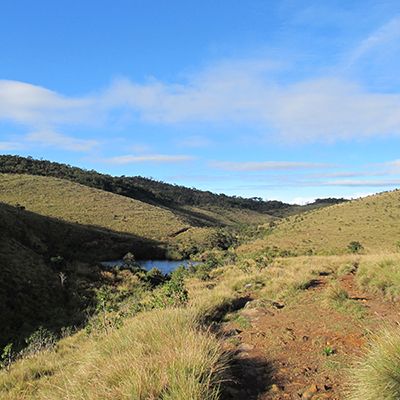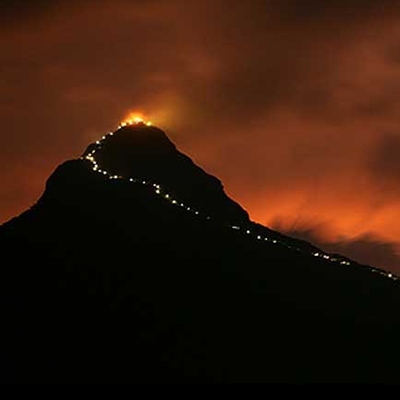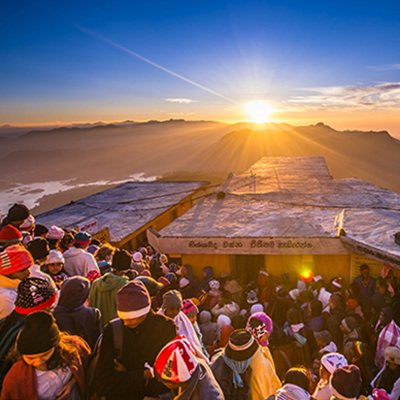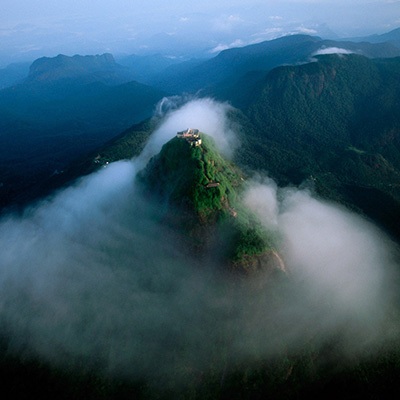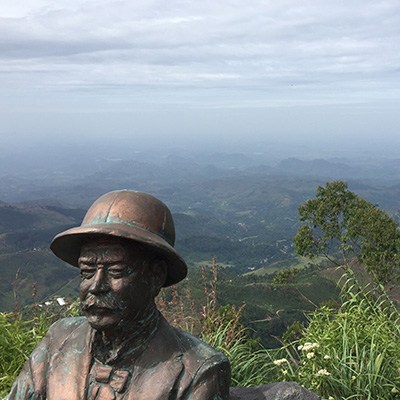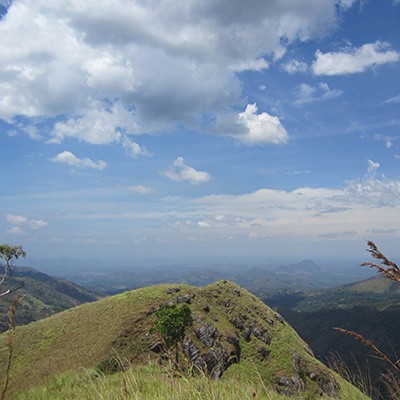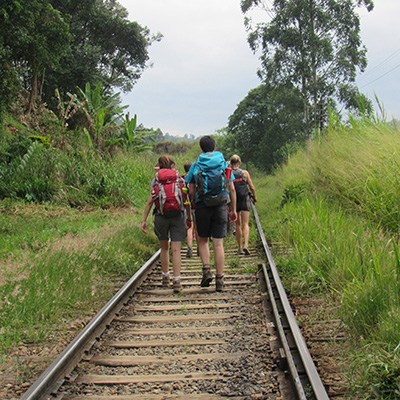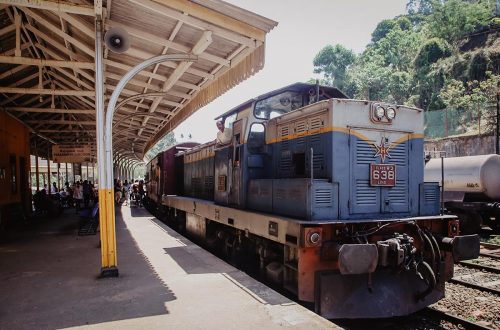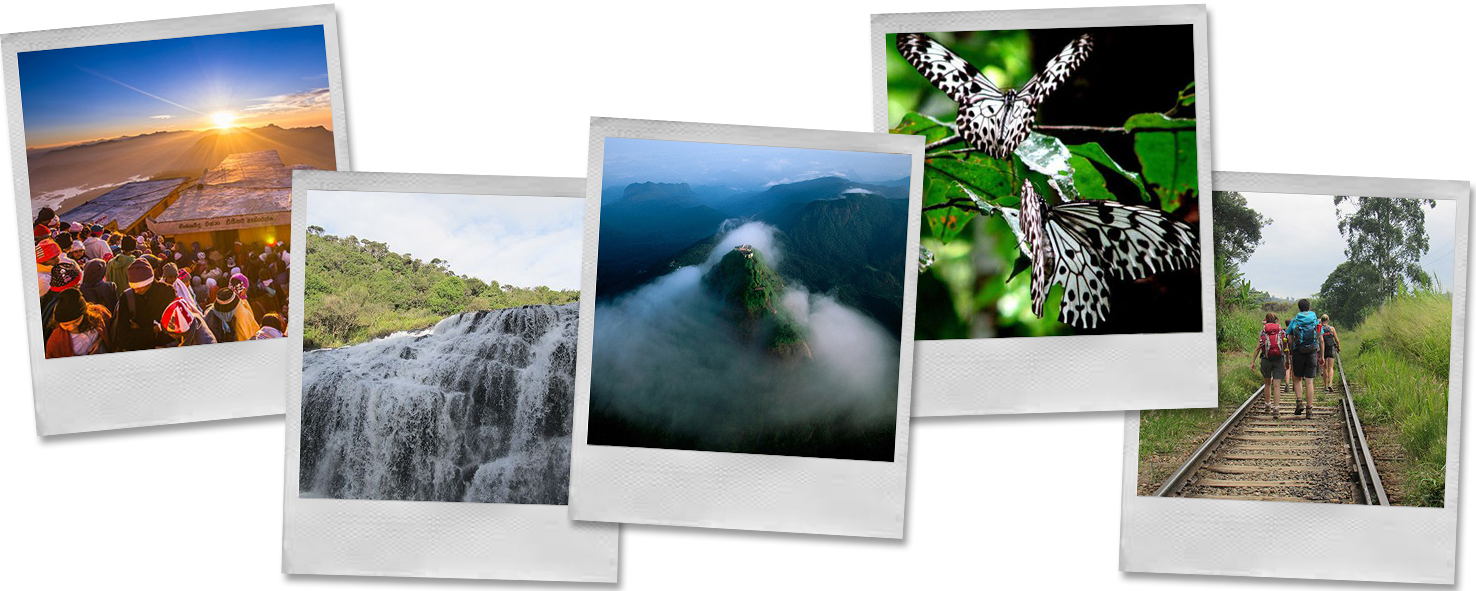
Walkers in love with nature will not be disappointed in Sri Lanka because the island offers many opportunities. Indeed, Sri Lanka has not only paradisiac beaches but also many other treasures; different climates, breathtaking views, inviting waterfalls for swimming, trails in the middle of the tea fields, tropical forests, spectacular sunrise, endemic species, multitude of birds… You’ll understand, in Sri Lanka the sites are rich and the landscapes varied, there is something for all tastes and all levels!
Here’s a little glimpse of some of the island’s most famous sites for walkers, from the central highlands to the rainforests to the tea region:
Sinharaja Forest Reserve
The Sinharaja Reserve, also known as Sinharaja Rain Forest, is an 11,187-hectare forest located southwest of the island, 60 km south of Ratnapura. This primary rainforest is all that remains of the ancient rainforest that once covered much of Sri Lanka. This area, watered between 3,614 and 5,006 mm of rain per year, was declared World Heritage by UNESCO in 1989. It is also recognized as of world importance and has been classified as a “Biosphere Reserve since 1978”.
This lush forest is a real treat for wildlife lovers as there are many endemic species. Thus, more than 60% of the trees in the Sinharaja Reserve are endemic and many of them are considered rare. And, even if we are not an insatiable on plants, we can only admire this tropical forest where we can see huge trees (which can reach 50 m in height) and a multitude of orchids wild. Regarding wildlife, the reserve contains most of the island’s endemic birds, it is a real paradise for birdwatchers who can observe 20 of the 24 endemic species listed in the country. Also, the rate of endemism is high in mammals, amphibians, insects, especially butterflies, and even in reptiles.
During a trek in the heart of the forest, you are almost sure to see monkeys, which are found in abundance in the reserve. On the other hand, it is almost impossible to see elephants that are very few in the area. Finally, it should be noted that leeches are ubiquitous because of the humidity.
The best time to discover the Sinharaja forest: from December to April and from August to September.
Knuckles Range
The Knuckles Range covers an area of about 21,000 hectares northeast of Kandy. The name “Knuckles” was awarded by the first British topographers. It comes from the fact that the five main peaks of this mountain range (Kirigalpottha, Gombaniya, Knuckles, Koboneelagala and Dotulugala) resemble the fingers of a tight fist.
The locals call for the mountain range “Dumbara Kanduvetiya” which means “misty mountains of Dumbara”. Indeed, the mist is very present, which gives a lot of charm to the massif. In addition, beyond the aesthetic contribution the mist is of great scientific interest since it creates a microclimate. Since 2010, the Knuckles Range as well as the Hortons Plains and the Peak Wilderness Sanctuary are listed as UNESCO World Heritage Sites under the name of “Central Highlands of Sri Lanka”.
The Knuckles Range consists of 35 summits over 1000m, 20 to more than 1500m and 2 to more than 2000m. It is a paradise for hikers and trekkers of all levels but also for those who like mountain biking. Many trails are traced and they alternate between: breathtaking views of the valley, tea plantations, green rice fields, dense forests, clear rivers and spectacular waterfalls. Knuckles also contain numerous birds (more than 120 species), mammals such as elephants, leopards, buffaloes, boars and deer, as well as many species of small reptiles.
The best time to discover Knuckles Range: from December to February.
Horton Plains National Park
Horton Plains National Park is located about 20 km south of Nuwara Eliya, Sri Lanka’s tallest city, with an average elevation of 2,200 m. Like the knuckles, this 3,160-hectare park is part of the “Central Highlands of Sri Lanka”. It is in these plains of Horton that the three largest rivers of Sri Lanka have their source. Indeed, it rains frequently on this protected area, but we observe a dry season from January to March.
The average annual temperature is 13 ° C and the park is often plunged in a thick fog that forces you to leave early. Indeed, the mist that rises around 10 am prevents any visibility. Getting up early is well worth it, the scenery is incredibly beautiful and the ‘end of the world’, the ‘World’s End’, is definitely worth the trip. Indeed, this belvedere at the top of a cliff high 884 m offers an exceptional panorama. Also, it is advisable to arrive early at World’s End to enjoy a beautiful sunrise. Very beautiful waterfalls are also to be seen in this park.
In terms of flora and fauna, the Horton plains are also famous for hosting many endemic species. The park has close to 750 species of plants and 52 species of birds (plus 11 species of migratory birds that stop there between November and March). You can also meet many butterflies, fallow deer, deer, bears, wild boars, monkeys and lizards. The lucky ones can also see leopards, there would be about 45 in the region. Unfortunately the herds of elephants that were once in the plains were all killed by colonial hunters.
The best time to discover Horton Plains National Park: November to March.
Adam’s Peak
The Adam’s Peak, the Adam Peak or “Sri Pada” in Sinhalese, rises to 2243m making it the 4th highest peak on the island. It is located in the Peak Wilderness Protected Area, an area of Horton Plains National Park and is therefore part of the “Central Highlands of Sri Lanka” which have been on the UNESCO World Heritage List since 2010.
It is a unique place in the world where pilgrims of four faiths meet every year between December and May. Indeed, Buddhists, Hindus, Muslims and Christians are all climbing this mountain which is considered a sacred pilgrimage. This is due to the fact that the nearly two-meter cavity dug into the rock at the top of the mountain is considered a footprint. Some people think that it would be here that Adam first set his feet on the ground after being chased out of paradise, others see the sacred imprint of the Buddha while others think it is the trace of the passage of Vishnu or Shiva…
Anyway, this climb of 5200 steps offers more unique spiritual experience. Especially the days of full moon (poya day), holidays in Sri Lanka. However, the full moon days are days when the crowd can be very dense and so it is not certain to be able to reach the top.
The climb is usually done at night to avoid the heat but especially to enjoy one of the most beautiful panoramas at sunrise. It is essential to cover yourself with warm clothes, it is particularly cold at the top due to the wind.
The best time to discover Adam’s Peak: from December to February.
Ella
Ella is not a national park but a small town in the heart of the “tea region”. This city at an altitude of 1041 meters is an intermediary between “highlands of Sri Lanka” where it is cooler and the plains of Sri Lanka. Here, the fauna and flora are also very rich and the surrounding hills are covered with tea plantations. The city, whose atmosphere is unique in Sri Lanka, is the starting point for many treks and hikes. The most famous climbs are Little Adam’s Peak, Ella Rock, but also Lipton’s seat, a little further, near Haputale.
Little Adam’s Peak, of course, refers to the famous Adam’s Peak mentioned above. This name was taken again because the two summits have the same form, but the comparison stops here, the Little Adam’s Peak, unlike his big brother, does not take a religious character. To reach the summit, which dominates the region at 1141 meters above sea level, it takes about an hour. This pretty walk allows you to pass in the middle of tea plantations. At the top we enjoy a superb 360 degree view of the surrounding plains. The level is generally easy if not the end that requires a little “climbing”.
Ella Rock is a view that faces Little Adam’s Peak. The beginning, along with a map provided by the guesthouse / hotel, is accessible to the greatest number. However, the end is more difficult and even impractical in the rainy season. During this journey, we take the railway where we cross many villagers, we cross a eucalyptus forest and we pass through some tea trees. Rock offers a beautiful view of the valley.
Finally the Lipton Seat is a superb point of view where you are surrounded by tea trees 360 degrees. Its name comes from the fact that Sir Thomas Lipton, the most famous tea grower of the British Empire, liked to come and contemplate his lands there. It is one of the most beautiful panoramas of the island.
The best time to discover the Ella region: from December to April.
Check out our video about the tea region:
If there are “best times” know that it is possible to visit Sri Lanka all year round. Mai globe team will create for you the perfect Sri Lanka tour, at any moment that you want to leave.
Beside Hiking and trekking, Mai Globe travel offers you diverse and unforgettable travel experiences !

